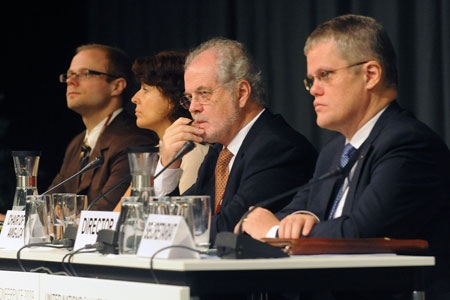The world needs to reduce greenhouse gas emissions by at least 50% from their level in 1990 by 2050, states a document written by the UN working group at the Copenhagen conference. The proposal also has a stricter version of 80 and 95 percent reduction

A working group working under the United Nations Framework Convention on Climate Change (UNFCCC) released six pages of text on Friday. The draft may produce the nucleus of a new global order to combat climate change beyond the year 2012, when the current framework agreement - the Kyoto Protocol - expires. However, most of the data in the text is presented in parentheses - that is, there is still no agreement on these details.
Most importantly, the draft states that emissions reductions should be halved by 2050 with the baseline being 1990 emissions, but also suggests reductions of 80 percent and 95 percent as possible alternatives. This is what Morten Andersen quotes today on the website of the UN Climate Change Conference which is currently meeting in Copenhagen.
The committee that created the document was headed by Michael Zammit Kotager, chairman of the ad-hoc group for long-term cooperation. Ad Hoc Working Group on Long-Term Cooperative Action (AWG-LCA).
Even the core purpose of the deal is in parentheses. During 2009, a number of scientific and political conferences called for keeping global warming below an additional two degrees Celsius. However, the new draft cites the figure of 1.5 degrees Celsius as a possible alternative goal.
Besides the ultimate goal of cutting emissions by 50 percent (or 80 percent, or 95 percent respectively) by 2050, the document also sets an intermediate goal to be achieved by 2020. For emissions created by the developed countries, the draft report proposes a reduction target of 75 % in reducing emissions compared to 1990 or almost 95% of today's emissions.
He proposed a percentage reduction in the year (or more - in the range of up to 95 percent). As for developing countries, the document calls for a "significant deviation" in emission rates in view of their recent increase.
Reactions in Copenhagen vary. "There are many holes in the document - the draft still clearly shows that an agreement can be reached. The holes need to be filled through political will and specific political commitments. We still don't know how much money will be paid and by whom," said Kim Carstensen, head of the World Conservation Organization's (WWF) climate campaign, to the Danish newspaper Berlingska.
The one who was more critical is Irwin Jackson from the Australian Climate Institute: "It will be a huge step back if this document is adopted. There is nothing in it from a legal point of view that would bind the US or even large developing countries such as China and India," Jackson told the Sydney Morning Herald newspaper.

8 תגובות
The Copenhagen conference should focus on population growth, even if we reduce greenhouse gas emissions per person by 50% by 2050, overall emissions will not change because the population will probably double by then.
In my opinion, there should be laws that limit families from having more than two children. (With exceptions of course, there are special cases).
And with regard to freedom of religion, "Shabbat-rejecting mind control".
At least the amount of oxides will decrease, no matter if it is greenhouse gases or ozone.
This agreement is very funny.
And his fan coverage….
I no longer provide links to the hundreds of undisputed facts that completely contradict the false theory.
You are not able to admit a mistake, so you ignore it, continue, there is not much time left for theory. A little more and she falls.
The only problem that remains is how to believe the scientists. A very difficult problem. A great gift for the religious and the knowledgeable...
A hit for generations.
to his attorney,
The only countries that can develop such technology are the rich countries, but the purpose of the conference is to create a system of punishment and taxation on carbon emissions, that is, to take money from the rich countries and transfer it to poor countries, money that could have been invested in developing technologies.
to an anonymous user,
There are still fuel reserves for hundreds of years, regarding the catastrophe vision, you probably know who the prophecy was given to.
Nuclear fusion is the only solution
For 100 years we have already used half of the fossil fuel reserves and it is realistic that within 50 years with the accelerated development in the industry of the developing countries we will run out of them but if we release all the greenhouse gases that this amount will create into the atmosphere the situation will be catastrophic and almost the entire world will no longer be fit for human existence and that means death taxi
Nir
Ultimately the goal is to get the countries to invest money in the development of the technology to a level of economic viability.
Apart from that, the solution of course is to quickly exhaust the fossil fuel reserves (let's say by 2040), then in 2050 the world will emit almost nothing.
These drastic reductions will not be possible if there is not the appropriate technology that is also economically viable, and if there is such technology, the reductions will happen with or without a treaty.